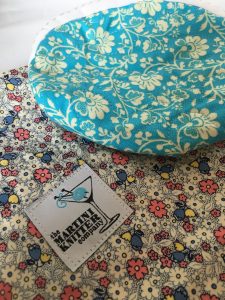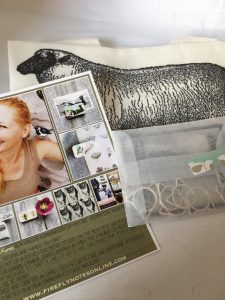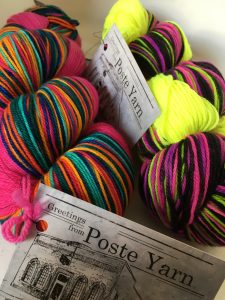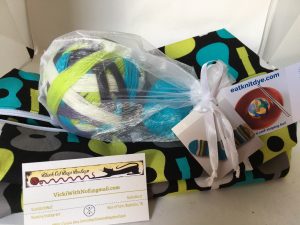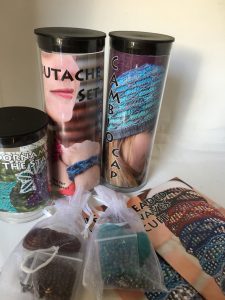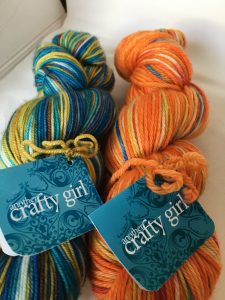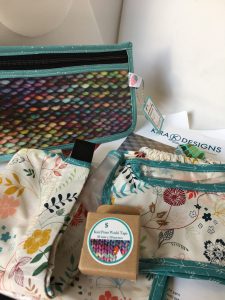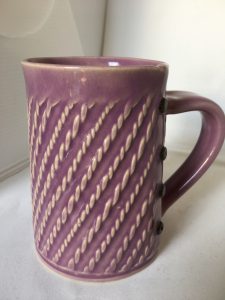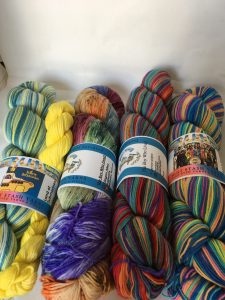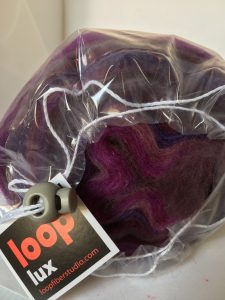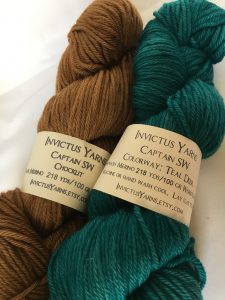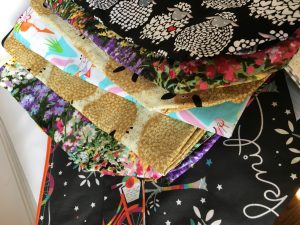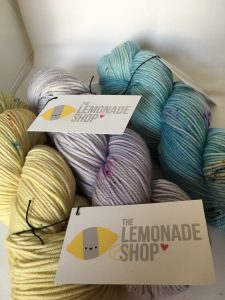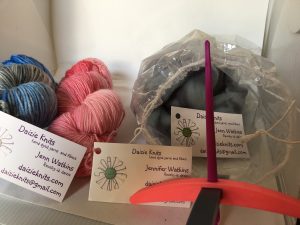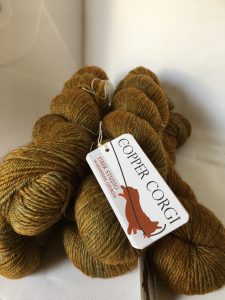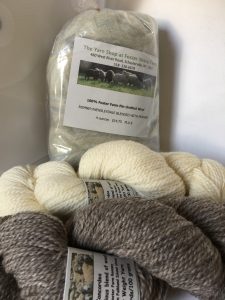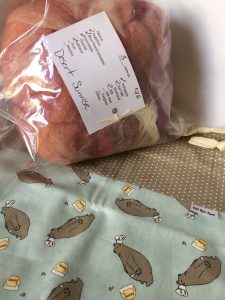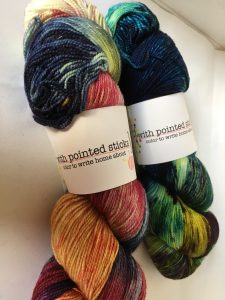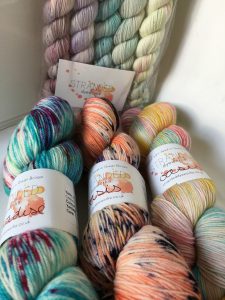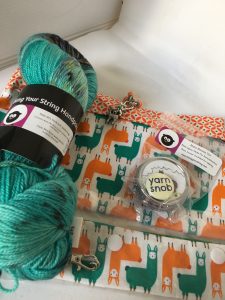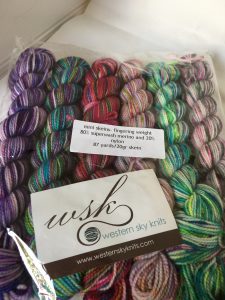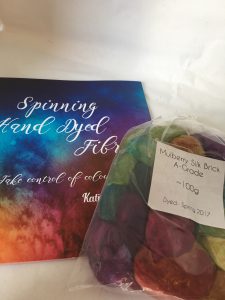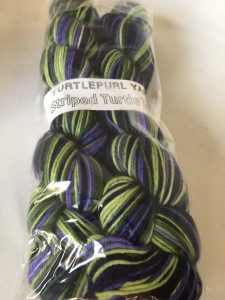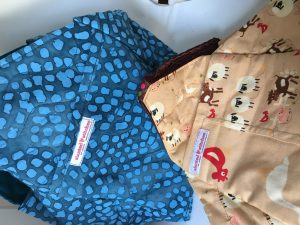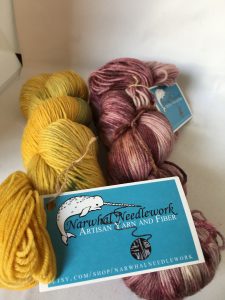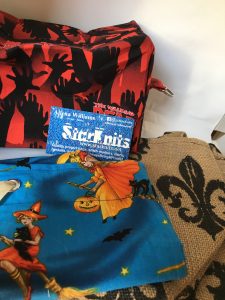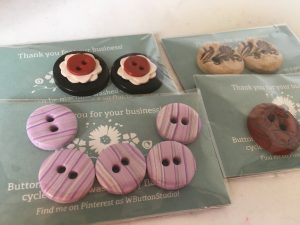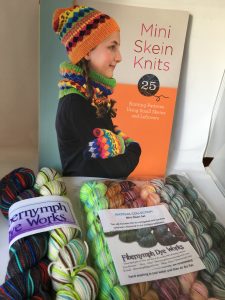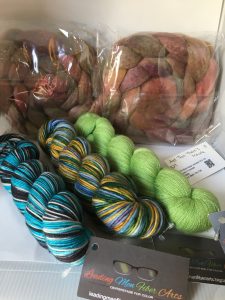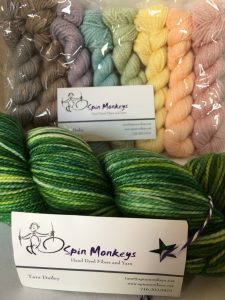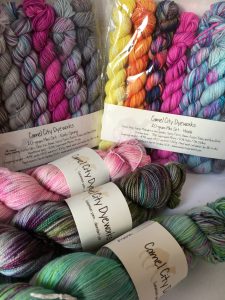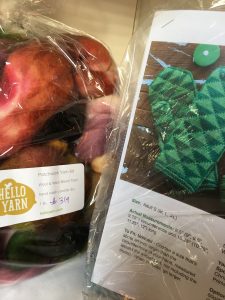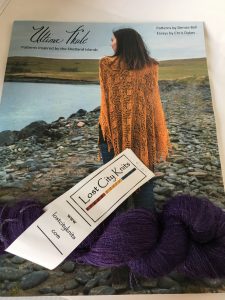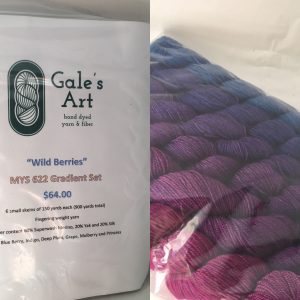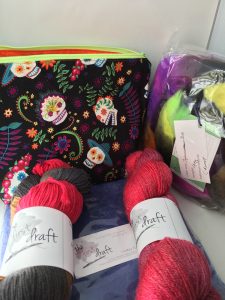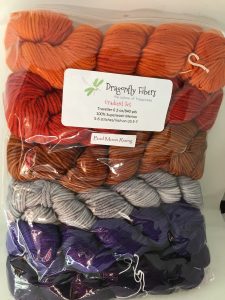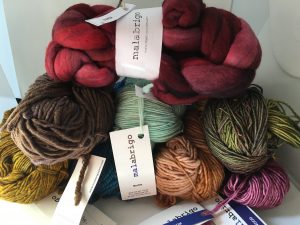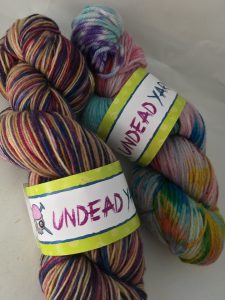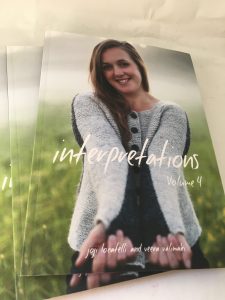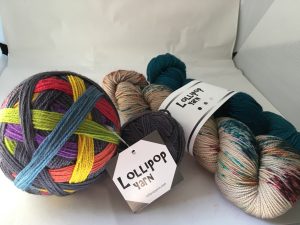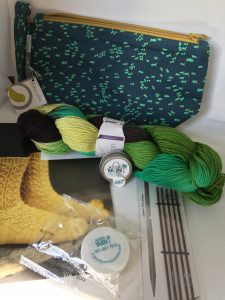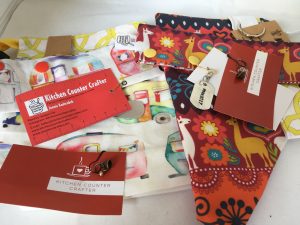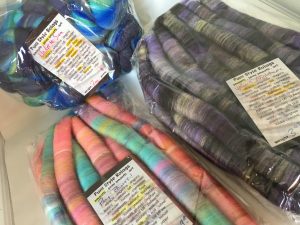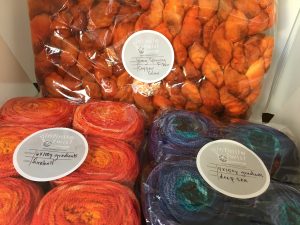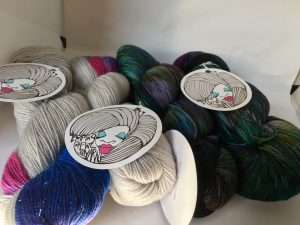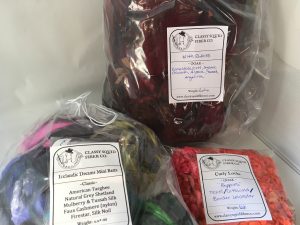Class Rosters will be linked here on June 15th
If you have any questions, please contact Laura and she will be happy to help you!!!!
Class signups will begin Monday, May 28th and will continue until the minute before classes start at SSK. I will add a google form link to this page on May 28th for people to fill out. I would prefer that all current attendees of SSK try to get this filled out by June 4th. We will do our best to let you know what class(es) you will have by June 15th. Class rosters are posted in the SSK group on Ravelry by time slot.If you have questions about anything to do with classes, please email or pm Laura and she will help you.
Hint: Once the rosters are posted on Ravelry, If you use the thread text search feature for your ravelry name, it makes it easy to find your classes.
How signups work:
Your SSK fee includes one class at no additional cost from one of our amazing teachers. We will ask that you choose your top three classes, and we will do our best to accommodate your request based on demand/class size. I try to have everyone’s selections in before I assign classes. In the past 3 years, almost every single person who was attending SSK at the time of class signups was able to get their first choice class. That’s something I am hopeful will happen again this year.
Additional classes may be available for an extra $50 per class cost. If you decide that you would like to add a class at anytime, just let Laura know via email and she will do our best to make that happen.
A special note about spinning and weaving classes: If you would like to take a spinning or weaving class and are unable to bring a wheel or loom with you, we will have 4-5 wheels and 3 looms available for free rental. We ask that you let us know on the class form because that may affect which session of class you will be able to take. If you can only use or prefer a specific wheel, please let Laura know.
And now to the good stuff, classes being offered!
Gale Evans
Dye an “unique to you” sock blank
In this class you will learn how to dye a sock blank
that has a special layer of meaning for you. Topics covered include: basic sock blank dyeing methods, color theory, dye theory, and how to go beyond basic to stamp and/or stencil and make it your own special creation. Be prepared to get your gloves dirty and create something as unique as you!
Class material fee – $16.00 and includes one single strand sock
blank, access to all dyes, stencils and mark making tools I can
cram into my car and a hand out with information to recreate
this at home. More sock blanks will be available for purchase in
the class.
Dye Silk Scarves
Looking to create a lovely personalized gift in very little time? Or maybe you love the silk scarves that you see people wearing and want to make your own unique creation? In this
3-hour class beginner class, we will create outstandingly beautiful scarves in no time at all using a microwave and simple dye techniques. Dye and color theory along with dyeing silk techniques will be taught.
Class materials fee of $16.00 will includes 3 silk scarves, dyes
and equipment for dyeing as well as a handout to work from
home.
Esther Rodgers
BASIC WEAVING ON A FRAME LOOM- BEGINNER
In these basic classes you’ll learn the techniques for weaving on a tapestry/frame loom. The beginner class will cover warping and initial skills like making shapes and different types of knots for texture. Students will also learn how to remove the weaving from the loom and finish it for hanging.
**Students should bring white or black yarns for the warp, weaving tools, as well as an assortment of yarns in different colors and weights to use as weft
If you need to purchase a loom, Hipstrings will have the 8×10 size Lisa Frame Loom for $28.
TWISTED TOGETHER- Crepe, Cables and the Endless Possibilities of Layered Plying (advanced beginner/intermediate)
This is a great class for all sorts of spinners- from ultra textured art yarn spinners, to the most traditional laceweight spinners!! In this half day class students will explore the basic structure of crepes and cables. First spinning the basic crepe, boucle and cables, then we’ll see what happens when you combine techniques like chain ply a boucle, or cable thread plies.. Students should be able to spin a single of different weights, and ply comfortably. Corespinning knowledge is helpful, but not required. Included materials are: assorted hand dyed tops and batts, use of plying yarn. Students should bring mix of colors of batts and top/roving- including 4 oz of a solid color. Also please bring your Spinning wheel, 3 bobbins, bobbin of fresh overspun singles (as even as possible), niddy noddy, lazy kate, any plying yarns they would like to play with. Multiple types of fiber prep tools will be provided. We will play with creating textures by plying and plying again.
Material Fee: $20
CORESPINNING for FUNK and FUNCTION (Advanced beginner)-
Ever wonder how to make that cloud of expensive cashmere go as far as possible, or how to spin those fun textured yarns? In this corespinning class you’ll learn how to do both! Combining the fun with the function, corespinning is a wonderful way to make the most of your expensive fibers, as well as preserve texture and spin those funky art yarns – even the expensive tailspun yarns! As a bonus in this class we will talk about how these corespun yarns are used in knitting. Patterns will be provided, as well as knitted and woven samples will be available for examination and discussion. Carding textured art batts will also be demonstrated. Students must be able to spin a single and ply on a wheel. Included materials are: unusual fibers and add in’s. Students should bring their wheel, bobbins, lazy kate, assorted carded fibers (batts, rolags, roving), any other loose fiber (farm wool/locks/fleece) scissors, a tapestry needle, a niddy noddy and any add in’s they’d like to corespin into yarn. (sequins, ribbon, pom poms etc)
Material Fee: $25
Kirstin Kapur
Learn Stranded Colorwork with the Trillium Mitts —
These adorable mitts area great first colorwork project. They begin with a Latvian braid, before moving into simple stranded colorwork patterning. We will learn two handed colorwork knitting, Latvian braid, controlling tension in colorwork, catching long floats without dropping the yarns, and following a colorwork chart.
Skill Level: Intermediate and up. Must be comfortable casting on, binding off, working small circumferences in the round (on dpn’s, two circulars, or magic loop), working increases and decreases, and following simple stitch patterns from charts or written instructions.
Materials: Trillium Mitts Pattern (available on Ravelry), two or three different colors of sport weight yarn to make the mitts, (100% wool is best), double pointed needles or circulars for magic loop in US sizes 3, 4, & 5, stitch markers, scissors, tape measure.
Mosaic Knitting and the Amalgamation Shawl —
Mosaic knitting is a wonderful way to achieve colorwork without having to carry two yarns at once. In this class we will explore mosaic stitch patterns and how we can use them to add color to our knitting. We will learn to select colors to achieve the look we want. By the end of class we will be ready to cast on and begin to knit the Amalgamation Shawl pattern.
Skill Level: Intermediate and up
Materials: Amalgamation pattern (available on Ravelry), fingering weight yarn for swatching in a variety of colors, fingering weight yarn to knit the shawl pattern (colors with a lot of contrast between them are recommended, if using variegated yarn for one of your colors DO NOT match the contrasting yarn to any of the colors in the variegated yarn) 24 or 32″ circular needles in sizes US 2-4 (if you are a very loose or a very tight knitter bring additional sizes), stitch markers, scissors.
Darn That Sock! —
It’s a fact of life, socks wear out. When those socks are handknit it’s pretty hard to throw them away. If you’re like me, you have a bag full of old socks that you just can’t part with. Let’s give those socks a new life with the traditional art of darning! No need to worry if you didn’t hang on to the leftover yarn from your socks, visible mending is a popular trend that works great for darning socks. So pull out your contrasting scraps and let’s give darning a try.
Skill Level: Beginner and up.
Materials: Your worn out handknit socks (bring several options if you can) scrap yarn in a variety of colors in the same weight as your socks — be bold, remember visible mending is fun, darning egg (can be purchased from several online sources), tapestry needle, scissors
Homework: None
Isabel Kraemer
Top down knitting – Basics and beyond
You’re confident with basic stitches and construction techniques? In this workshop, I’ll try to guide you through some techniques to expand your skills and take your knitting to the next level – I’ll take you on a (knitting) trip from the top down – a method that enables you to try your sweater on from time to time to check the overall fit while you’re knitting.
We’ll discuss different ways of knitting a sweater from the top down and learn some useful tricks.
Level: Intermediate (knitting in the round, basic knowledge about sweater construction)
Materials: Notebook and pen, knitting yarn and matching circular and double pointed needles (dk or worsted weight will work best), safety pins or locking stitch markers, darning needle, crochet hook (same size as knitting needles) and some waste yarn.
Homework:
1.: Neckband (starting point for short row use in neck shaping): cast on 60 sts and join to knit in the round. Work 4 rounds in 1×1 Rib (k1, p1), then knit 1 round. Stitches should be left ‘live’ on the needle to be able to work from this point.
2.: 2 tiny rectangles – provisionally cast on 10 sts for each of the rectangles and work 10 rows in Stockinette stitch. Stitches should be left ‘live’ on the needle (or holder/scrap yarn).
Seamless Set-in Sleeves
What about being able to get the tailored look of a classic set-in sleeve without any sewing? This workshop will guide you through the techniques needed to work a set-in sleeve seamlessly from the top down.
Level: Intermediate (knitting small circumferences in the round, basic short row techniques (wrap and turn))
Materials: Notepad and pen, knitting yarn and matching circular and double pointed needles (dk or worsted weight will work best), safety pins or locking stitch markers, darning needle, and some waste yarn.
Homework: Additional file will be emailed to participants.
Laura Nelkin
Knitting a Novus Sweater
In this 3 hour class, Laura introduces you to the “novus” constructions, her seamless yet structured modern approach to the side-to-side sweater. She’ll cover how the construction works, how to modify the construction to fit your body, any necessary skills (provisional cast on, lifted increase, german short rows) and how to plug a stitch pattern or motif into it. Then we’ll discuss choosing yarn to knit the sweater and cast on for a sleeve. By the end of class you’ll be ready to independently knit your own sweater from the collection.
Skills Needed: Best for knitters who have knit a sweater before or are adventurous first time sweater knitters. You must be able to knit and purl and have comfort reading a pattern.
Materials list: Dk or worsted weight yarn for swatching, size 6-8 needles (please do not purchase yarn ahead of time for the sweater since a fair amount of time discusses yarn choices).
Shetland Lace Basics
What is Shetland lace? How does it differ from other lace styles? What are the tips and tricks you need to know to work it successfully? Laura will cover some history of Shetland lace and the delve into techniques to help you knit it successfully. The class will cover basic increases and decreases, walk you through chart reading, and get you on your way to becoming a more advanced lace knitter! Skills gained in this class will translate over to many patterns that use lace stitches.
Skills needed: basic lace skills
Materials list: 30 yards of fingering or sport weight yarn, US size 5 or 6 needles, stitch markers.
Save your Stitches: Fixing Lace Mistakes
do you want to knit lace but have no idea what to do when you make a mistake? Laura will demystify the anatomy of your lace with you and teach you how to know when you can fix and when you have to rip. You’ll learn how to replace yarn overs, insert missing decreases, rebuild sections of your knitting, and even how to avoid making mistakes in the first place.
Skills Needed: Knit, purl and basic lace stitches.
Materials: 30 yards smooth, light or bright colored sport weight yarn, size 6 straight or circular needles, size 6 dpns, 1 size 4mm crochet hook.
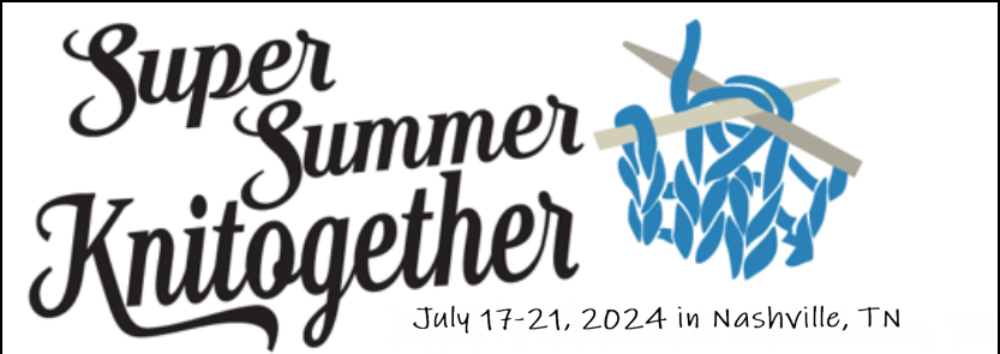
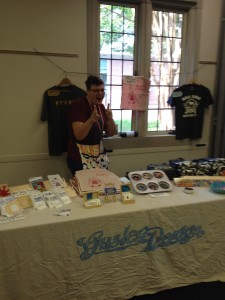
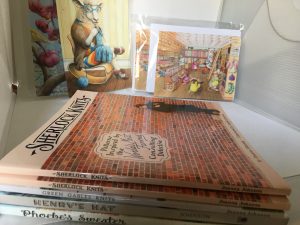
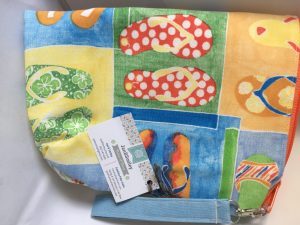 A summery bag from
A summery bag from 